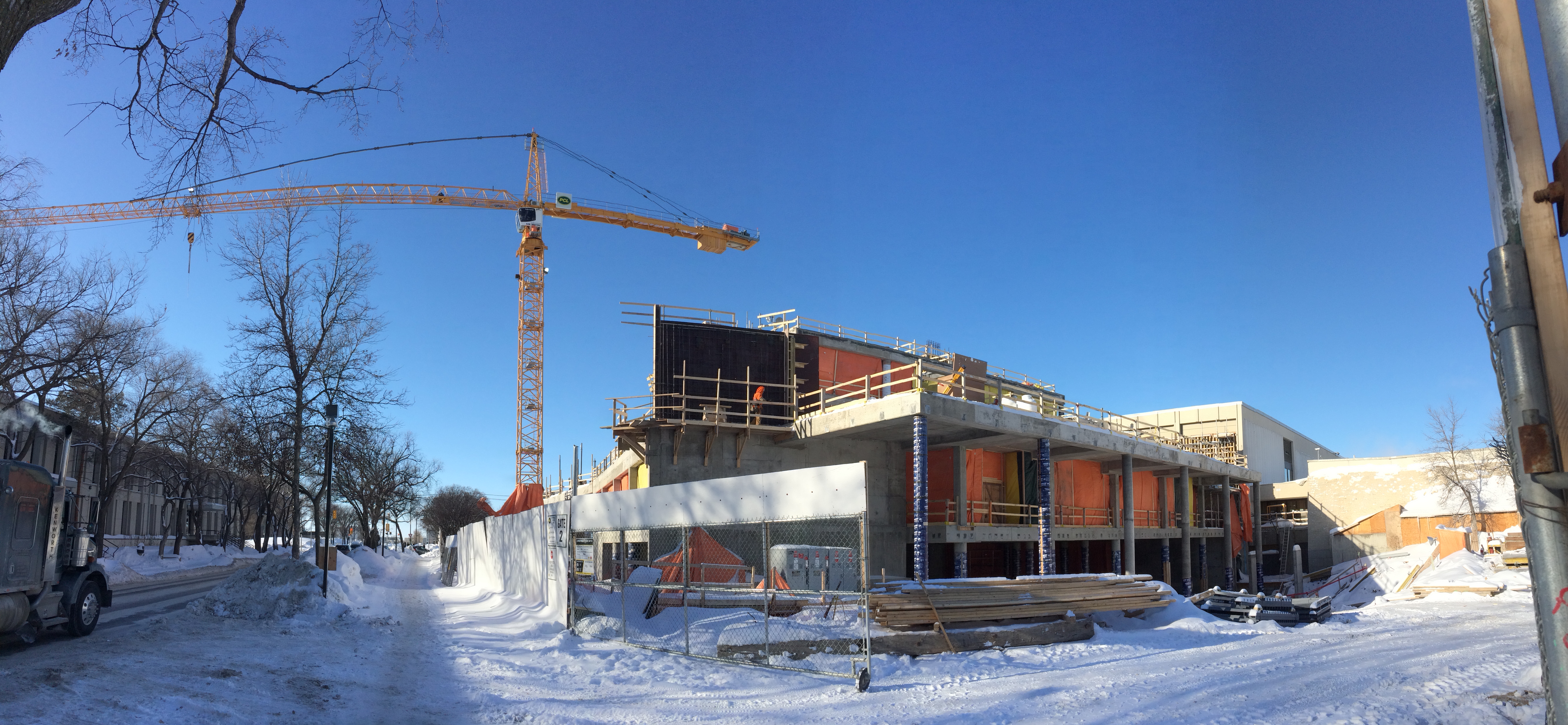Students and the community have taken notice of the ongoing construction alongside Frank Kennedy Centre at the University of Manitoba. The space will be home to the Active Living Centre, a $45 million campus addition set to open in early 2015.
Gary Thompson, director of active living at the U of M, told the Manitoban that the primary driving factor of the project was to get out of the Gritty Grotto, which he said looks, smells, and feels like a basement.
“We believe the University of Manitoba students deserve better,” said Thompson.
He said that enhancing the student experience by offering these facilities is a big priority in light of research that shows a strong connection between recreational physical activity and mental health.
The brand-new components of the facilities will include three multipurpose rooms; an enhanced climbing wall, which will be more dynamic and higher than the current one; and the “agora,” an open meeting space with flexible seating and new food service options, which Thompson said will be “much different from Timmy’s.”
Another addition is the Applied Research Centre, a 10,000-square-foot space (the Active Living Centre is 100,000 square feet overall).
Gordon Giesbrecht, a professor from the faculty of kinesiology and recreation management at the U of M, said the research centre will help “design and evaluate programs that will actually get people active.”
Thompson described a “getting started suite” after identifying that there are a lot of people who chronically fail at getting started on and sustaining an active lifestyle.
“Some of that is through social anxiety and body image issues, so we wanted a smaller place, not in the general public, where we can work with those groups to learn the language of fitness, and to learn how to use the basics of equipment to the point where they felt well-equipped to go into the public.”
Andrea Hilderman of architectural services at the U of M’s physical plant, said other fitness facilities in the community will not be able to offer what the university can with the research and knowledge base the centre will provide.
The aesthetics of the building are central to the faculty’s mission to engage people in active living.
“We anticipate there will be a drop-off point outside the western doors of the centre to induce people to come into the building, and [be able to] access the tunnels to all of campus [ . . . ] Because the building is made of glass, even if you’re not walking in it you’ll be able to see inside it and see people being active,” said Thompson.
The project team hired polar-opposite user groups to deal with issues—such as the use of the track, and the use of the fitness area and privacy area—and the groups found harmonious solutions together.
“We paid a lot of attention to the different types of users based on focus groups. There are places for people who want to look outside or watch the TV or Internet, or people who want to be seen, and people that want privacy,” said Thompson.
John Danakas, director of marketing communications for the U of M, said the current cost of $126 for a four-month membership and $162 for an eight-month membership for full-time students will decrease to $75 and $150, respectively, with the opening of the new centre.
A two-term membership (Fall and Winter) for part-time students will cost $112.50 and a Summer Session membership will be $56.25.



